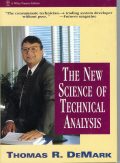.jpg)
Follow
Us:    
|
Hurry… Enrollment in Wendy’s Millionaire Maker Alliance
ends TODAY!
It’s SUPER important that you click on the link below IMMEDIATELY...
How You Can Become Our Next Millionaire [video]
The first to join Wendy’s Millionaire Maker Alliance were given a FREE subscription to
PEP Trade Alerts...
And I know you don’t want to miss out on receiving specific trade details... which have produced 66% average monthly return in live trading... emailed to you the moment it’s time to pull the trigger on a new Millionaire Maker trade. And, when it’s time to exit, you’ll get an email then too!
Only a limited number of complementary subscriptions were authorized. So, if you want to receive a full year of PEP Trade Alerts absolutely free, you’d better check NOW to see if you can still qualify.
How You Can Become Our Next Millionaire [video]
Wendy guarantees at least 100% in pure profits within the first 12 months… or your money back! Shouldn’t you at least take a look?
Click Here Now!

|
|
Thomas DeMark has spent 28 years in the investment business. DeMark has been a consultant to large hedge fund and mutual fund managers, and his many clients have included George Soros, Paul Tudor Jones, Union Carbide, IBM and many others. The featured speaker at numerous conferences, he has also written several articles for financial magazines and two successful books on market timing, The New Science of Technical Analysis and New Market Timing Techniques.
 |
Tom DeMark's
The New Science of
Technical Analysis
"This may be the most imaginative, informative and valuable investment book ever written!"

Tom's breakthrough methodology incorporates a number of new technical indicators that, when used appropriately, are incredibly accurate at forecasting changes in market direction. These indicators are price anticipatory. They consistently and accurately identify market entry and exit points to coincide exactly with upcoming turning points in market trends.
While highly scientific, Tom's indicators are startling in their simplicity. You don't need a Ph.D. in math to understand or apply them. All you need is a basic understanding of the markets and the dynamics of price movement.
Learn to Trade the DeMark Way
The New Science of Technical Analysis
|
|

Better
Business Bureau
 |
|
Click
on authors name
to learn more
|
| |
|
|
Inside Trading this week features an article from Tom DeMark who shares valuable lessons he learned trading options.
Lee Gettess provides our next bit of insight with a video covering his market expectations for the next week.
Then, Don Fishback talks about different types of debit spreads.
Last, Andy Chambers brings us his Weekly Market Line in the Sand newsletter.
Enjoy!
Adrienne LaVigne
TradeWins Publishing
 |
|
Options: Lessons Learned
by
Thomas DeMark
The following
is an excerpt from Tom DeMark's The New Science of Technical Analysis
When I first entered the investment business, the Chicago Board of Options Exchange (CBOE) did not exist. Options were underwritten by brokers and were traded over the counter. Since that time, however, much literature has been written regarding the topic of options. Unfortunately, most information concentrates on procedure and validation studies. Although some attention is devoted to methods that evaluate market sentiment and that indicate market direction, the extent of this information is woefully incomplete. All the observations I have made originate from personal experiences acquired as a result of numerous forays in the options markets and are not found in textbooks. Those who know me have heard me say “sweating out” personal trades seems to make a trader more alert to potential pitfalls; it also contributes to indelibly fixating on his memory various strategies and opportunities. I will describe my techniques and rules, and, I hope, impact some wisdom that will reduce the likelihood of your trading failure. These techniques have application to both equity and futures options.
Rather than recite numerous incidents and episodes that affected my options trading life, I will share with you the lessons learned. They were acquired as a result of being taught by the “ultimate market teacher” – trading losses. Psychologists have said that many traders possess an unconscious desire to lose in their investments. I am not one of those individuals. I have looked on trading losses, however, as the tuition cost required to be educated in successful market trading. This may sound trite, but I learned from experience. Had someone else offered this information to me years ago, I would have applied it and would have avoided frustration and heavy market losses. Although I was hungry and my appetite for information was voracious, nothing existed to satisfy it.
It has often been said that the only winner in the options game is the writer. Studies have shown that over 80 percent of option traders lose money. When the listed option markets opened, lack of sophistication characterized both the writers and the buyers of the options.
Options: Lessons Learned
|
Lee
Gettess' Market Sense
by Lee Gettess
Lee
Gettess is a top trader who is excited
to bring you his video newsletter.
Each week, Lee will share his predictions
on what he anticipates from the bond
and S&P markets.
Watch
Video
|
Debit Spreads
by Don Fishback
The following
is an excerpt from Don Fishback's ODDS Options Wizardry
Vertical Debit Spread
A vertical debit spread results when simultaneously buying and selling puts or calls of the same option class and expiration date, but with different strike prices. Because it is a debit (net cash paid out), the option purchased is more expensive than the option sold. In other words, the option purchased is closer-to-the-money than the option sold, resulting in a bull call spread or bull put spread. The maximum amount that can be earned on a Vertical Debit Spread is the difference between the strikes less the amount of the premium paid out. The maximum risk is the amount of premium paid out.
Call Debit Spread
As an example, assume that you are bullish and decide to establish a bull call spread in GOOG options. The June 480 call is trading at 18.60 and the June 490 call is trading at 13.40. You decide to enter the spread but do not want to pay more than the current price spread, 5.20 (purchase the 480 @ 18.60, sell the 490 @ 13.40).
To enter an option (call or put) Vertical Debit Spread you will need to provide the following information.
Debit Spreads
|
Weekly Market Line in the Sand
by Andy Chambers
The following is an excerpt from Andy Chambers’ Weekly Market Line in the Sand
Every week Andy Chambers publishes his “Weekly Market Line in the Sand” newsletter. The following are two trades from his most recent issue.
Mini Dow Weekly: The momentum shifted back to the bears. A weekly close over this week’s high of 17,864 would be a positive sign for the bulls. Right now, the chart is bearish.
Mini NASDAQ Weekly: The Mini NASDAQ and the QQQ have potential head and shoulders top setups on the weekly chart. We want to point them out because, if they are confirmed, the implications could be very bearish. A weekly close below the February low would confirm the pattern. A higher low bottom setup would be bullish. A weekly close over the April high of 4584.50 would void the bearish setup.
To Learn More Click Here
|
|